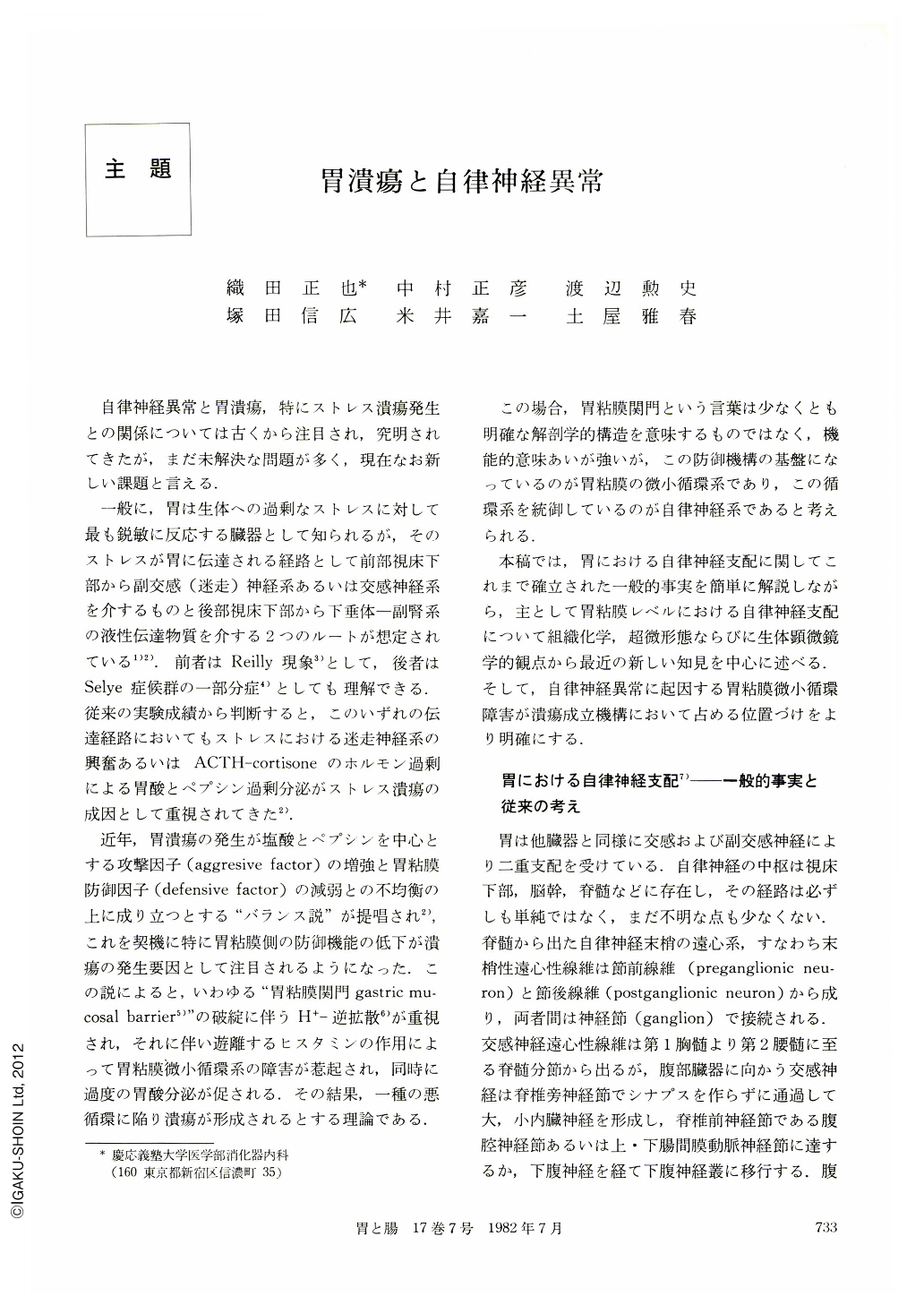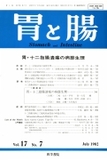Japanese
English
- 有料閲覧
- Abstract 文献概要
- 1ページ目 Look Inside
自律神経異常と胃潰瘍,特にストレス潰瘍発生との関係については古くから注目され,究明されてきたが,まだ未解決な問題が多く,現在なお新しい課題と言える.
一般に,胃は生体への過剰なストレスに対して最も鋭敏に反応する臓器として知られるが,そのストレスが胃に伝達される経路として前部視床下部から副交感(迷走)神経系あるいは交感神経系を介するものと後部視床下部から下垂体一副腎系の液性伝達物質を介する2つのルートが想定されている1)2),前者はReilly現象3)として,後者はSelye症候群の一部分症4)としても理解できる.従来の実験成績から判断すると,このいずれの伝達経路においてもストレスにおける迷走神経系の興奮あるいはACTH-cortisoneのホルモン過剰による胃酸とペプシン過剰分泌がストレス潰瘍の成因として重視されてきた2).
The distribution and function of the autonomic nerves in the stomach are outlined in the present paper. On the basis of recent trends in the research fields, the significance of the autonomic nervous abnormalities in the stress-induced gastric ulcerogenesis are emphasized in relation with the microcirculatory disturbances in the gastric mucosa.
It has been documented that stress is transmitted to the stomach via the autonomic nervous system. Therefore, the pathophysiology of stress ulcers can he explained by the Reilly phenomenon, in which an excessive irritation on the autonomic nerves causes hemorrhagic lesions in various visceral organs.
The scanning electron microscopic findings and the histochemical and ultrastructural localization of acetylcholinesterase (AChE), the enzyme for catabolizing acetylcholine (ACh), indicate that the parasympathetic (cholinergic) nerves may directly regulate both the functions of the glandular epithelial cells such as the parietal cell, and the capillary blood flow, in the gastric mucosal layer (the lamina propria mucosae). Both histofluorescence (ALFA method) and electron microscopic observation, revealed that the sympathetic. (adrenergic) nerve fibers are also distributed in the gastric mucosal layer and that the terminal axons coexist with the parasympathetic nerve axons in a single Schwann cell, reflecting the easy and excessive responsiveness of the stomach to a variety of stresses.
An increase in the activities of AChE detected through histochemistry and electron microscopy shows that the parasympathetic nerves are overstimulated in the gastric mucosal layer in the process of the restrain-induced ulcer formation. The excessive transmission of ACh to parietal cells and capillary endothelial cells results in the hypersecretion of gastric acid and in increased permeability of the collective venules and capillaries, concomitant with the various vasomotor disturbances, playing an important role in the ulcerogenesis.
The histofluorescent activity of the sympathetic nerves was rather decreased in the gastric mucosal layer during the course of restrain-induced ulcer formation. Moreover, selective damage to the sympathetic nerve terminals by 6-hydroxydopamine administration significantly promoted the ulceration. Hence, the sympathetic nerves are thought to be involved in the suppression of gastric ulcers.

Copyright © 1982, Igaku-Shoin Ltd. All rights reserved.


